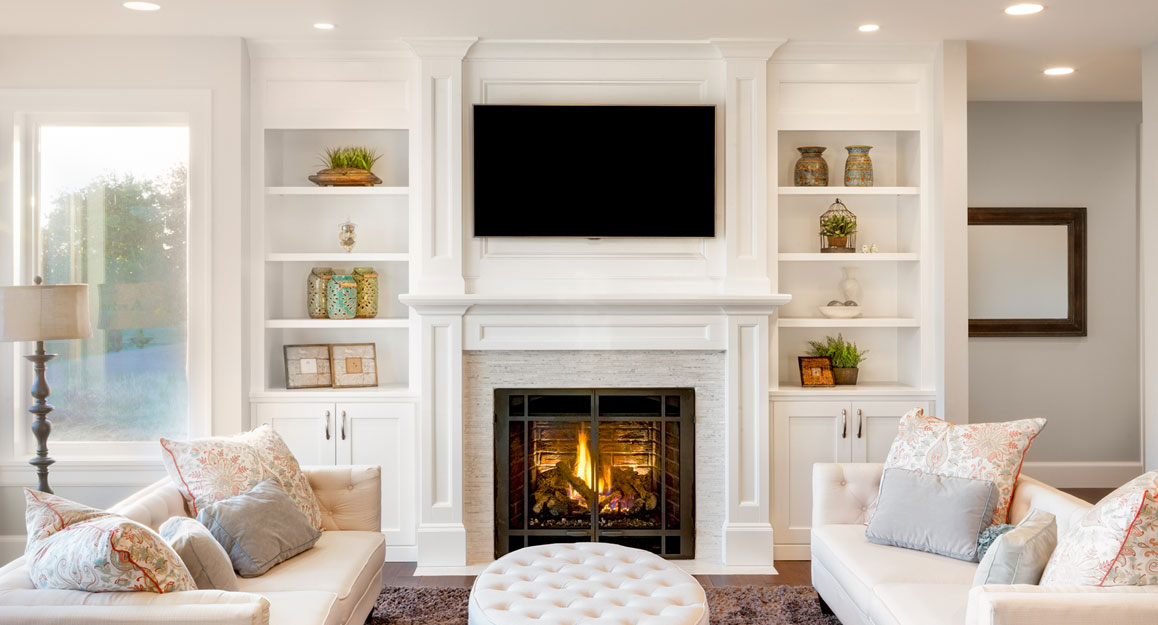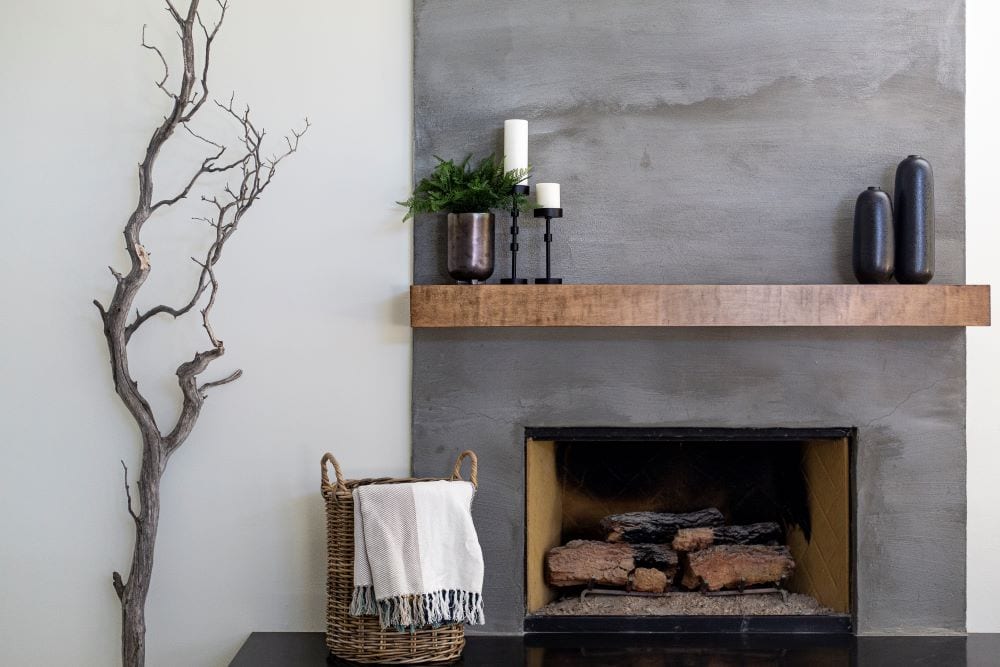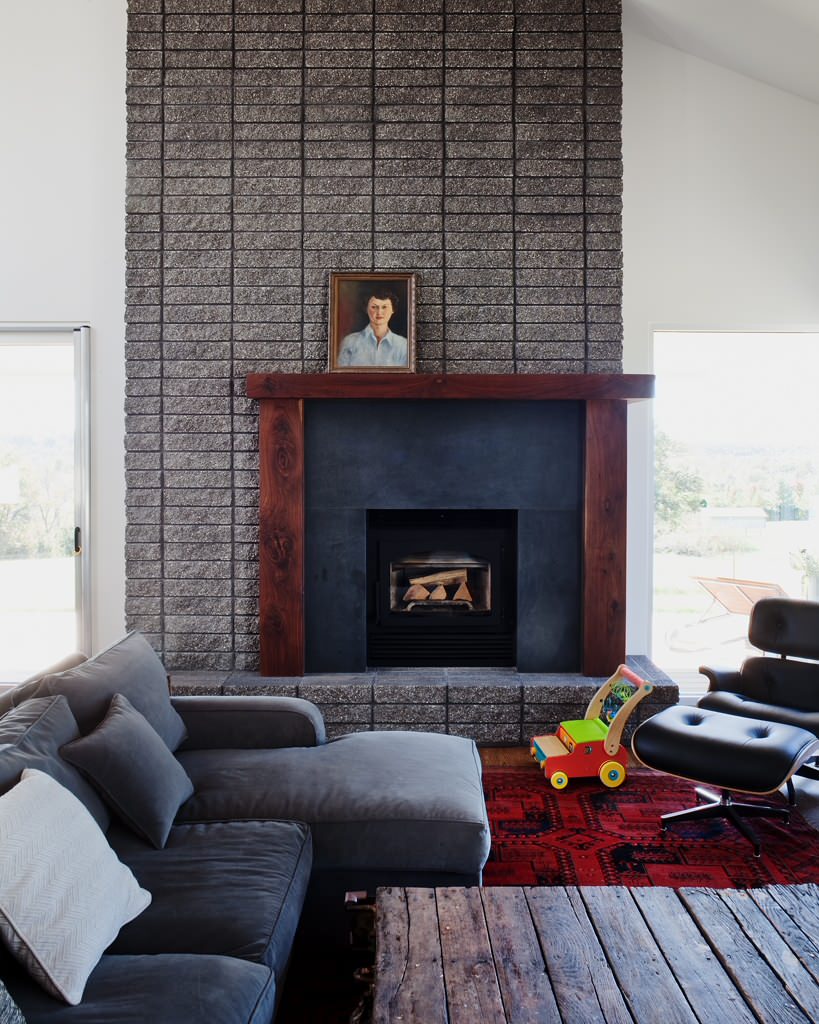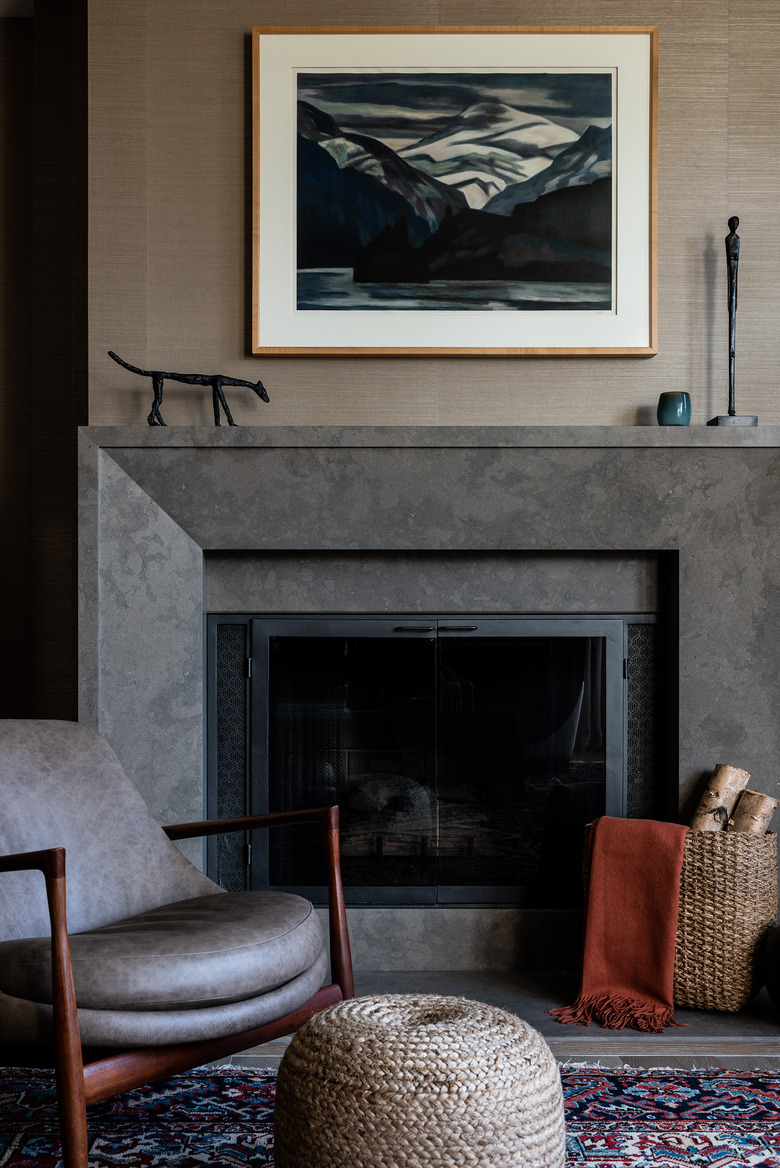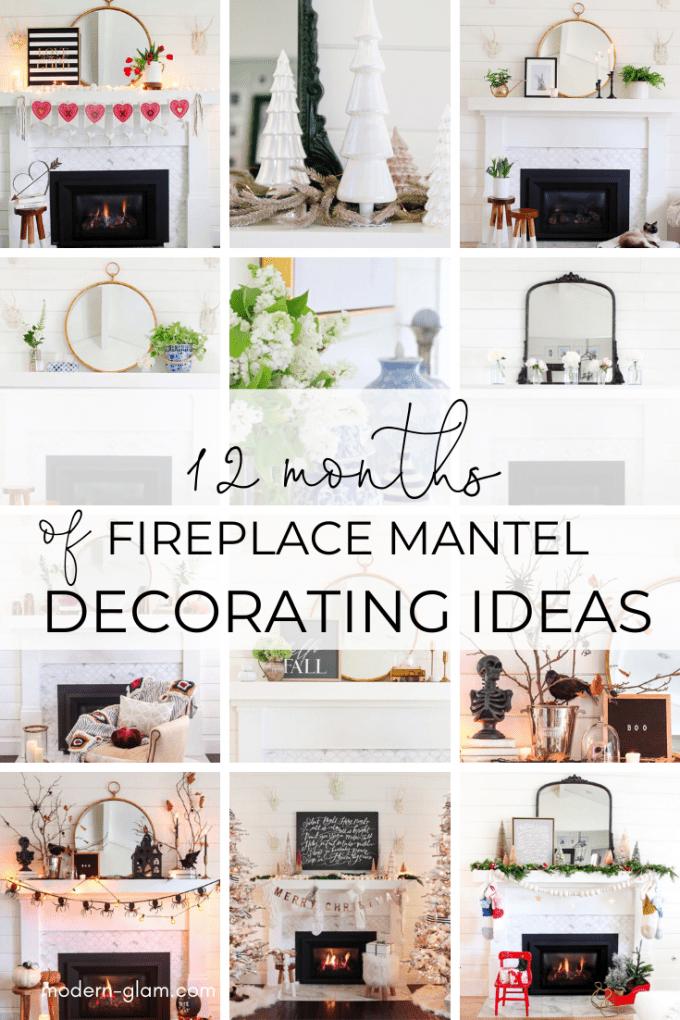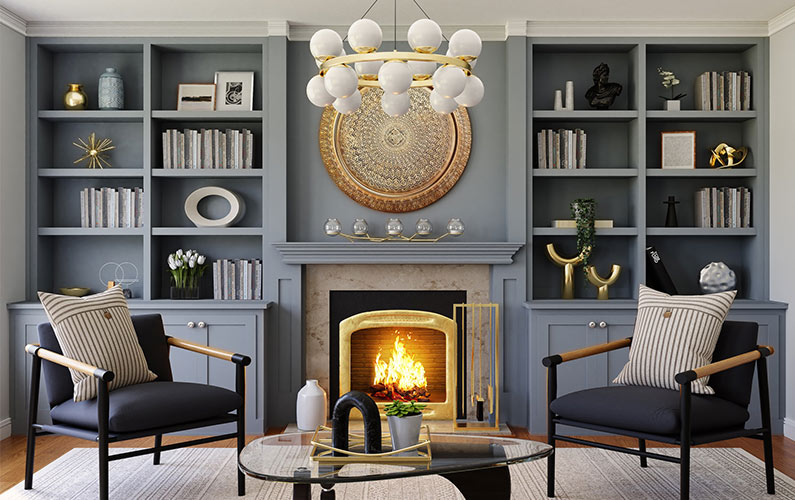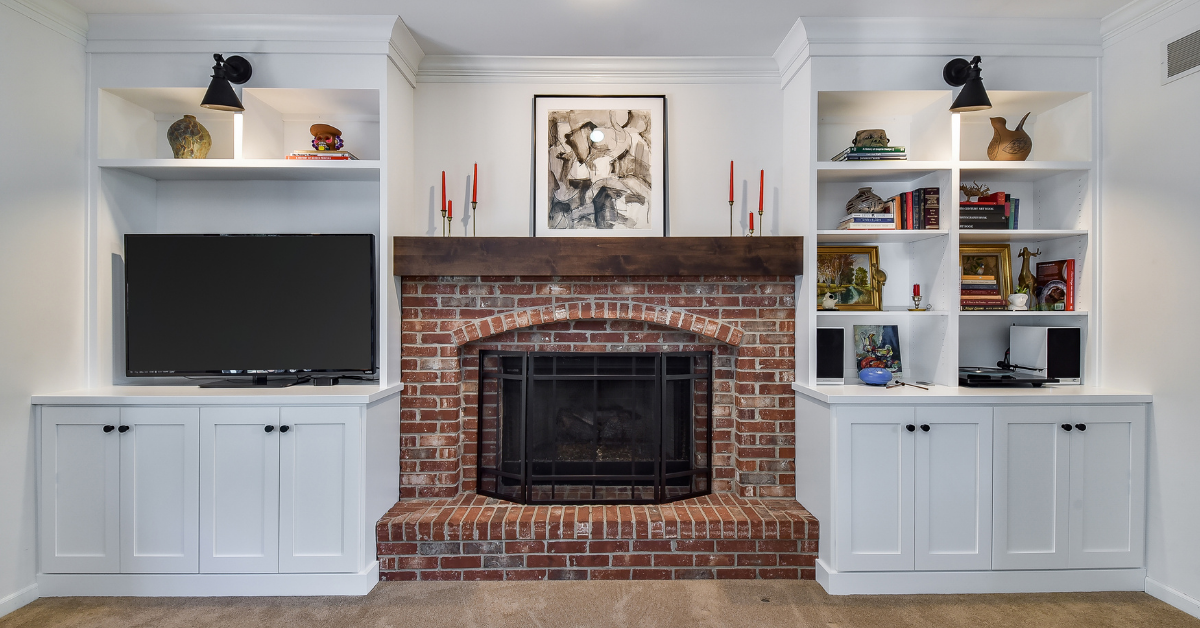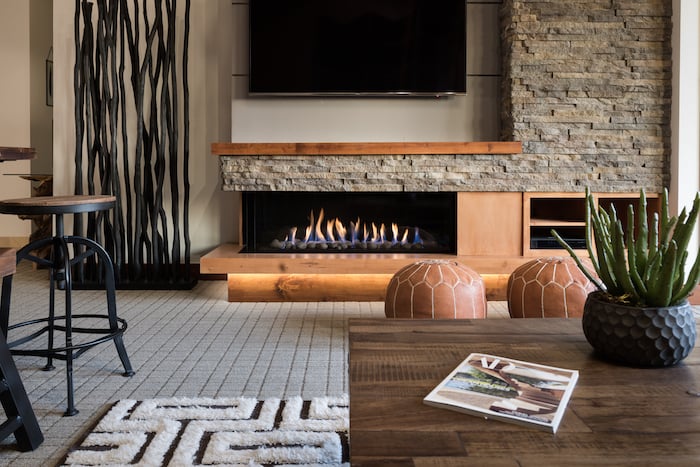After renovating four homes and constructing several fireplace surrounds, I realized that the surround can make or break the overall appearance of a room. What began as a simple desire to frame my first fireplace grew into an obsession with creating magnificent focal pieces that express personal flair while also meeting utilitarian demands. Through trial and error, I’ve discovered which materials perform best in certain situations, how proportions influence visual impact, and which design features provide timeless appeal vs current styles that rapidly go out of date. Allow me to share my knowledge with you so that you can construct a fireplace surround that will alter your home.
Classic Stone and Brick Surroundings
Natural stone remains my favorite choice for creating spectacular, long-lasting fireplace surrounds that will never go out of style. I’ve worked with limestone, travertine, and granite, each with distinct textures and colors that match a variety of architectural styles. Limestone offers gentle, neutral tones suited for traditional settings, whereas granite offers striking patterns ideal for contemporary settings. The goal is to select stone that complements existing components rather than vying for attention throughout the room.
Installation techniques have a considerable impact on the final appearance and lifetime of stone surrounds. I always use suitable backing materials and moisture barriers to avoid cracking and discoloration over time. Dry-stack installation yields clean, modern lines, whereas mortared joints provide classic appeal while improving structural stability. The joint width and color have a significant impact on the overall look, with narrow joints giving a seamless appearance and broader joints accentuating individual stone character and natural differences.
Brick surrounds provide variety by combining color, texture, and laying patterns to generate various visual effects. I favor salvaged brick because of its individuality and weathered appearance, which lends instant charm to any room. Herringbone and basket-weave designs are interesting alternatives to regular running bond, but they require skillful installation to get professional results. Painted brick brings up new design possibilities, but I recommend using high-quality masonry paint to assure long-term durability and adhesion.
Modern Tile and Metal Options
Large-format tiles have transformed fireplace surround design, providing a seamless appearance with no grout lines, resulting in sleek, contemporary designs. I typically utilize 24×48 inch porcelain tiles to simulate natural materials like marble or wood with astonishing realism. The installation necessitates accurate measurement and leveling, but the results are worth the extra effort. These tiles are resistant to heat and stains while still being easy to maintain, which busy homeowners enjoy for long-term happiness.
Metal surrounds add industrial elegance and high heat resistance to modern homes. Stainless steel has clean lines and reflects light well, but it reveals fingerprints and requires regular cleaning to keep its perfect appearance. Copper develops an appealing patina over time, resulting in a distinct character that evolves gradually. I install metal enclosures with suitable expansion joints to allow for thermal movement, preventing buckling or cracking that could damage both look and safety over time.
Mixed material techniques mix several textures and finishes to produce distinct, bespoke products that reflect individual style choices. To add contrast, I might pair smooth concrete with rough stone accents or metal panels with natural wood components. The challenge is to preserve visual balance while ensuring that all materials can survive heat exposure safely. The installation schedule is meticulously planned to avoid conflicts between different materials and ensure professional-looking connections and transitions throughout the surround assembly.
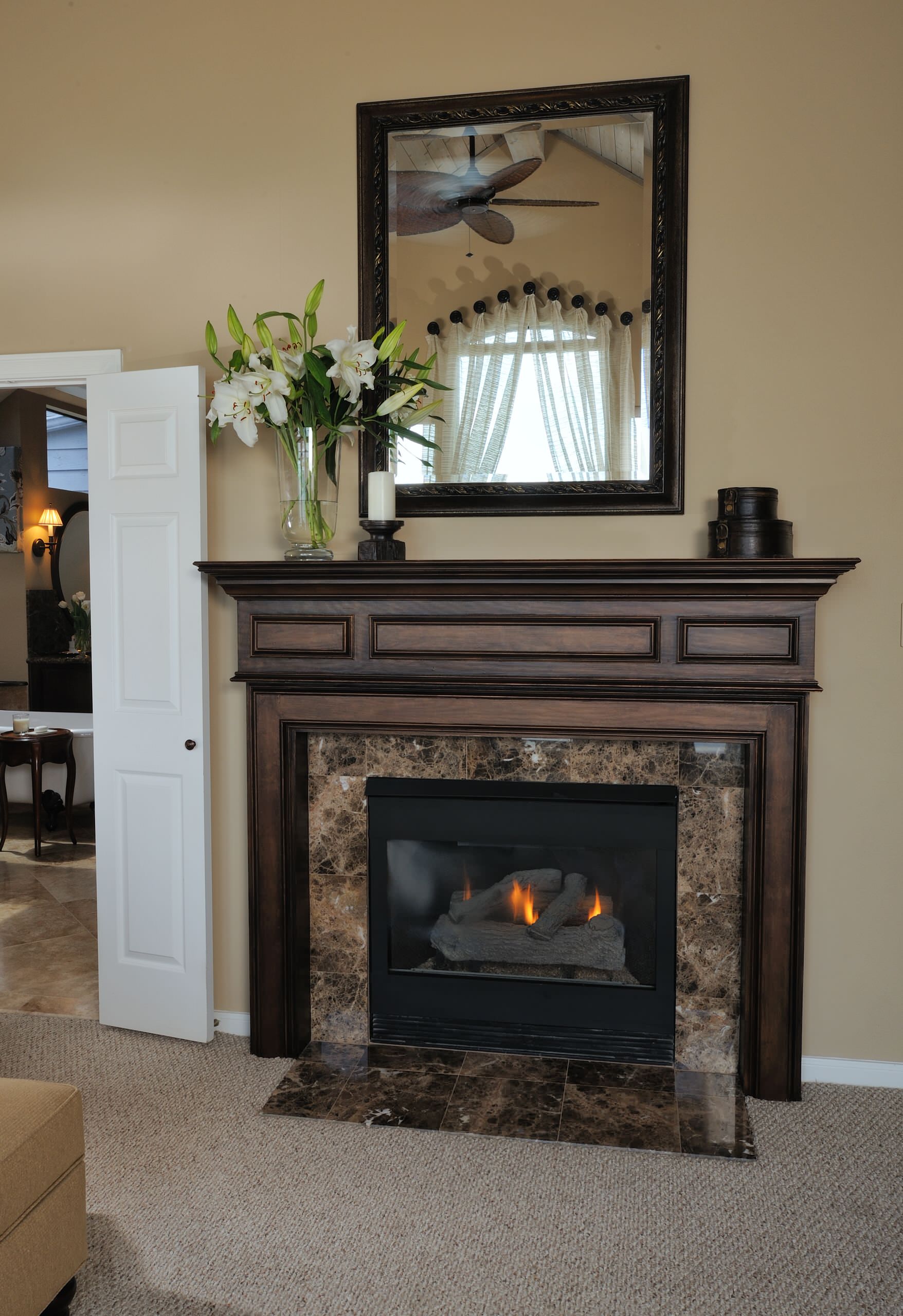
Wooden and Rustic Design Elements
Reclaimed wood adds warmth and character to fireplace surrounds while also promoting sustainable design techniques, which many homeowners appreciate. I get barn wood, old fence posts, and salvaged lumber from demolition projects, and each piece has a unique history and worn character. Insect inspection, fire resistance treatment, and sealing to avoid further deterioration are all part of proper preparation. Natural flaws and varying tones offer a true rustic look that manufactured products cannot match.
Live-edge components bring organic shapes and natural beauty to rustic fireplace designs that connect indoor and outdoor spaces. I used live-edge mantels made of oak, walnut, and cedar, each with its own unique grain patterns and colors. Proper kiln-drying avoids cracking and warping, while transparent finishes preserve the wood’s intrinsic beauty. The uneven edges stand out against the firebox’s clean lines and the surrounding buildings, attracting attention and sparking conversations.
Combining wood with stone or metal results in balanced designs that keep rustic aspects from overwhelming sophisticated environments. I might utilize a stone foundation with a wood mantel or insert metal elements into mostly wood surrounds. Fire-resistant treatments offer safety without sacrificing attractiveness, though I keep sufficient clearances from heat sources regardless of the treatments used. The proportions should feel natural and unforced, with each ingredient adding to the overall composition rather than contending for attention or dominance.
Contemporary Minimalist Approaches
Clean lines and geometric shapes characterize excellent minimalist fireplace surrounds that reduce visual clutter while keeping a powerful presence. Using flat concrete, huge tiles, or painted steel, I emphasize proportion and negative space above decorative embellishments. The minimalism necessitates flawless execution, as any mistakes are readily visible without excessive frills to divert attention. Every piece in the overall design must fulfill both functional and aesthetic functions.
Floating mantels produce dramatic visual effects while keeping the clean aesthetics that minimalist design requires. I often employ large concrete or steel beams that appear to pierce the wall and lack apparent support brackets. To safely hold both the weight of the mantel and anything placed on it, hidden mounting methods require significant underpinning and careful engineering. The appearance of weightlessness adds refinement while also offering useful exhibition space for minimum ornamentation that does not compete with the fireplace itself.
Monochromatic color schemes contribute to minimalist appeal by minimizing visual complexity and emphasizing form over adornment. I frequently utilize different shades of gray, from light concrete to dark steel, to create subtle depth without using conflicting colors. White surrounds have a crisp, clean appearance but require extra upkeep to avoid staining and damage. Black makes big statements and effectively covers grime, but it can feel weighty in smaller areas that require a lighter, more open atmosphere to maintain proper scale.
Built-in Storage and Functionality
Adding storage to fireplace surrounds increases functionality while preserving clean lines that do not appear cluttered or hectic. I create built-in cubbies for firewood storage to keep fuel convenient while adding visual appeal with texture and color contrast. Proper ventilation is required in the storage facilities to minimize moisture development and allow air circulation around the stored wood. Removable dividers allow to manage various wood types and sizes while retaining an orderly appearance that makes storage facilities appealing rather than utilitarian.
Media integration is becoming more crucial as entertainment centers and fireplace areas blend in modern living rooms. During construction, I carefully organize conduit runs for cables and power, keeping any connections hidden inside the surrounding structure. When mixing electronics and fireplace heat, heat management is especially important, and ventilation systems or heat shields are frequently required to safeguard delicate equipment. Visual integration should feel natural rather than forced, with technology complementing rather than dominating the overall design composition.
Hidden compartments and pull-out elements provide practicality without sacrificing the visual appeal that homeowners seek in multi-purpose rooms. I installed hidden drawers for fireplace tools, covert compartments for kindling, and pull-out tables for drinks and nibbles. The hardware must endure high temperatures and repeated use while staying undetectable when closed. These elements necessitate careful planning during building, but the continuous convenience justifies the increased complexity and cost associated with appropriate execution and installation.
Color Scheme and Finishing Touches
Neutral color palettes offer timeless appeal and the ability to change decor while preserving traditional elegance that does not date rapidly. Warm grays, soft beiges, and creamy whites suit a wide range of decorating styles and color palettes. These hues successfully reflect light, making spaces appear larger and brighter while allowing furniture and artwork to serve as accent colors. The surround becomes a sophisticated backdrop rather than a competing focal point, limiting decoration options over time.
Bold accent colors can have a striking impact when utilized sparingly in the overall design composition. For a contemporary contrast, I may choose deep blue tile with white grout or charcoal gray stone with bright metal accents. The goal is to balance dramatic pieces with neutral surroundings to avoid overwhelming the room. Accent colors should complement other aspects in the area, resulting in a coherent design rather than standalone statements that feel distant from the overall decorating scheme and architectural character.
Finishing features such as trim work, edge treatments, and hardware selection have a big impact on fireplace surrounds’ perceived quality and elegance. I pay close attention to corner treatments to ensure clean joints and uniform reveals throughout the installation. Quality door or drawer hardware should feel robust, perform smoothly, and complement the overall design appeal. The details frequently decide whether a surround appears professionally constructed or clearly DIY, so careful attention to finishing work is critical for attaining desired effects and long-term happiness with the completed job.
What is the most economical material for fireplace surrounds?
Painted drywall with decorative trim is the most affordable alternative, but it lacks the durability and visual impact of other materials. Ceramic tile provides exceptional value by combining low cost, heat resistance, and ease of maintenance. I advocate investing in high-quality materials for high-use fireplaces, as cheaper alternatives frequently require replacement sooner. Installation complexity has a substantial impact on total costs, with simpler designs saving money on labor. When deciding on early material investments, keep long-term maintenance and replacement expenses in mind.
How do I select the appropriate proportions for my fireplace surround?
Proper proportions are determined by room size, ceiling height, and fireplace opening dimensions, resulting in visual equilibrium throughout the space. Typically, I create the surround 1.5 to 2 times the width of the fireplace opening, with a height of at least 8 feet, or two-thirds of the ceiling height. The mantel should be 6-8 inches from the wall to provide appropriate presence without overwhelming smaller areas. Before beginning construction, mock up proportions with cardboard or painter’s tape to see how the final product would look and make any necessary revisions for maximum visual impact.
Can I install a fireplace surround myself, or do I need to contact professionals?
Simple surrounds made from lightweight materials such as tile or wood trim are frequently appropriate for DIY installation with modest tools and abilities. Heavy materials such as stone, as well as sophisticated designs needing structural alterations, should be handled by professionals to ensure safety and code compliance. I recommend seeking professional advice for any project requiring gas lines, electrical work, or structural improvements. When picking between DIY and professional installation, consider your skill level, available time, and local building code requirements to ensure the best outcomes and safety compliance.
What are the clearances between the surround and the fireplace opening?
Building rules normally require 6 inches between combustible materials and fireplace openings, however particular restrictions vary depending on location and installation type. Non-combustible materials, such as stone or tile, can be put closer, often right next to the opening. I usually study local codes and manufacturer specifications to determine exact requirements. Mantels require different clearances depending on their projection from the wall, with deeper mantels requiring more vertical clearance from the opening. Professional consultation assures code compliance and safety in all surround installations and material selections.
How do I maintain various types of fireplace surround materials?
Natural stone requires regular sealing to prevent stains and moisture penetration, which can cause damage over time. Depending on the type of grout used, tile surrounds must be cleaned and resealed on a regular basis. To maintain their look and fire resistant treatments, wood elements must be dusted and refinished on occasion. Metal surrounds benefit from cleansers that do not damage finishes or protective coatings. Regular inspection for cracks, loose pieces, or damage helps prevent minor issues from escalating into serious repairs that need extensive work and expense to rectify properly.
What is the best technique to improve an existing fireplace surround?
Painting existing surrounds is the most cost-effective updating choice, but adequate preparation and high-temperature paint are required for long-lasting results. Adding decorative components such as trim, tile accents, or new mantels can significantly alter appearance without requiring major renovation. Refacing with new materials over existing surrounds is effective when the structure is sound and correctly sized. Complete removal and replacement allows for maximum design freedom, but it comes at a higher cost and may require structural adjustments. Assess the current state and desired outcome to establish the most appropriate and cost-effective update strategy for your particular case.
Mantel Ideas for a Warm & Cozy Fireplace – Sebring Design Build
Contemporary Fireplace Mantel Design Ideas for Interior Designers
Fireplace Mantel Decor Ideas – Three Ways to Style Your Mantel! –
Mantel Decor Ideas With Farmhouse Style – The Unlikely Hostess
Related Posts:
